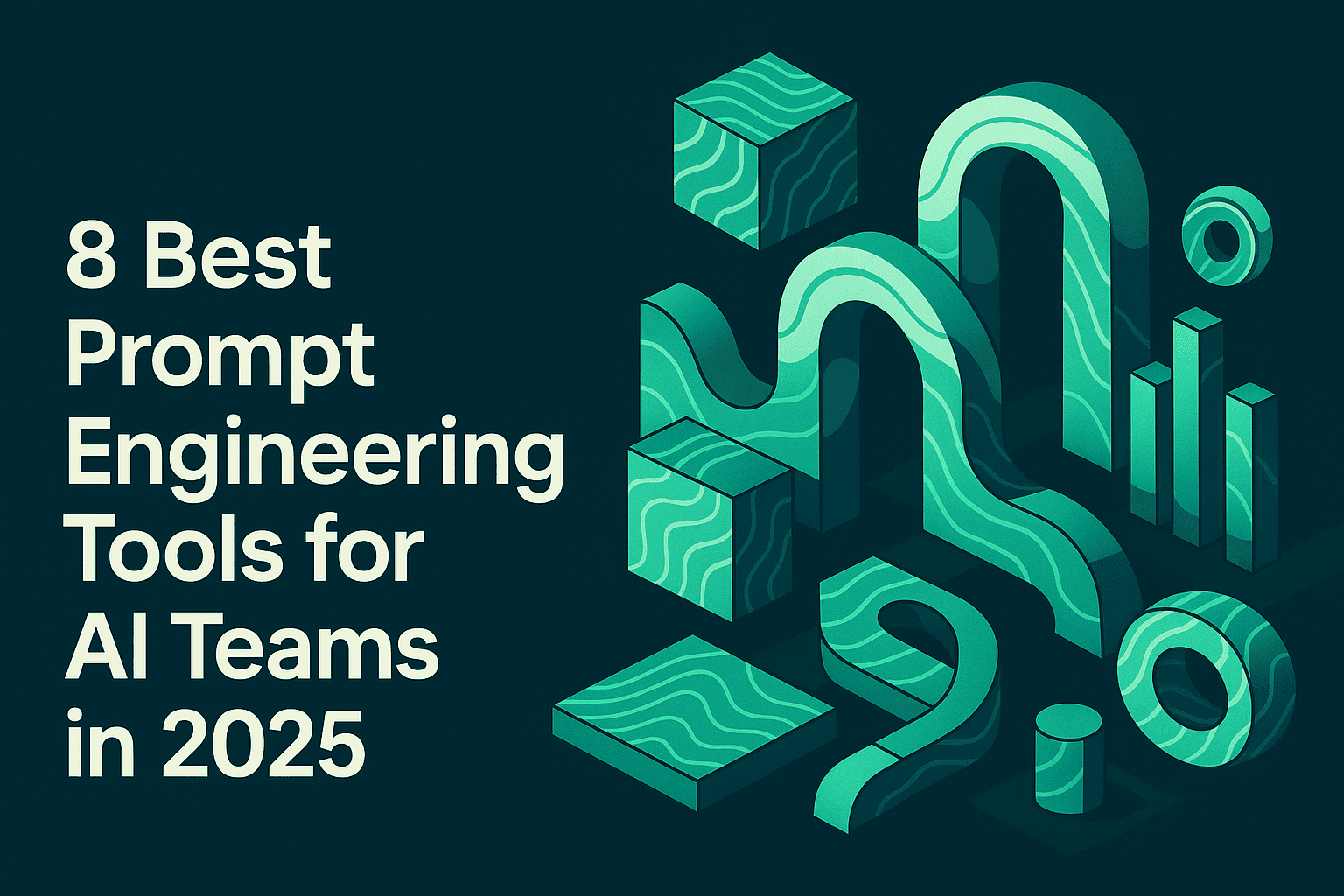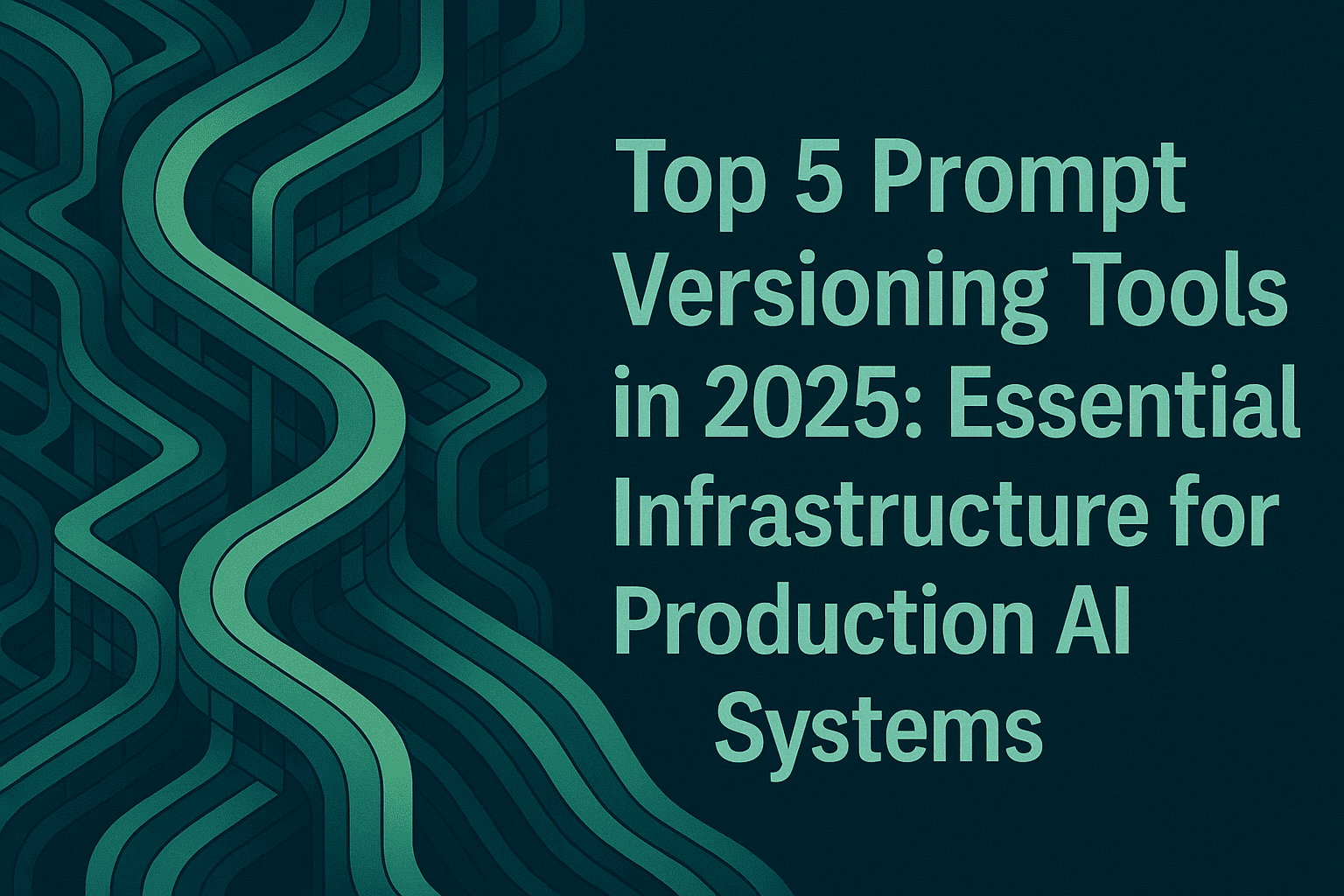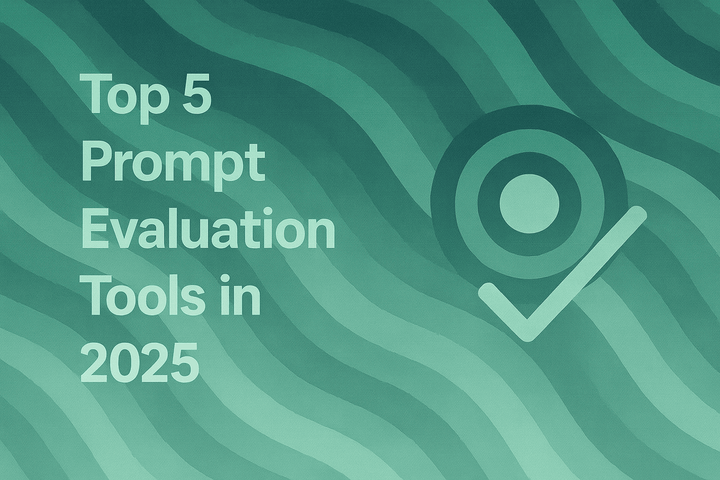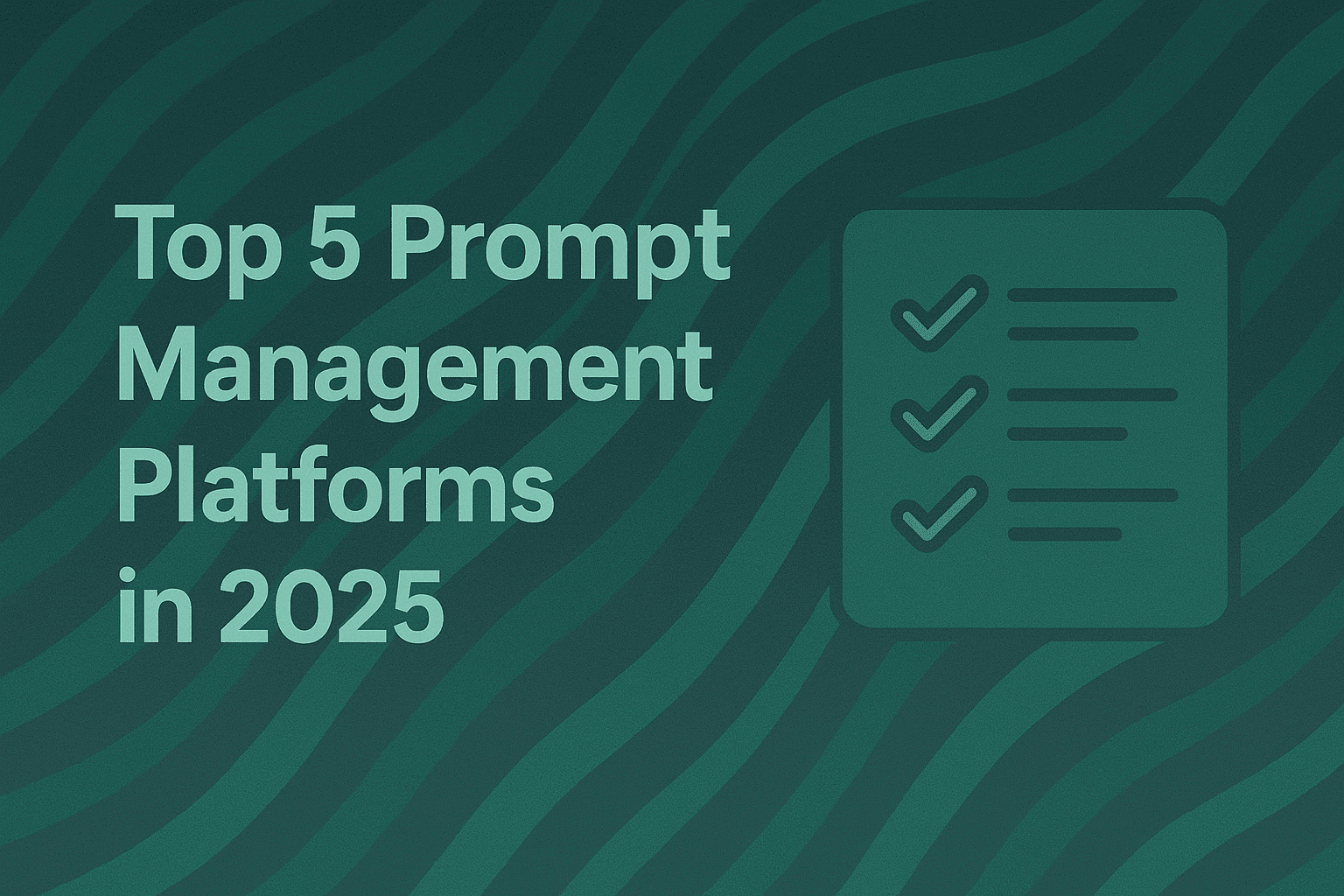8 Best Prompt Engineering Tools for AI Teams in 2025

TLDR
Prompt engineering has become a critical capability for AI teams building production-ready applications. Modern prompt engineering tools go beyond simple text editors, they provide versioning, testing, deployment, and observability features essential for scaling AI applications. This guide covers eight leading platforms: Maxim AI, LangSmith, LangFuse, Agenta, Weave, Lilypad, MiraScope, and Haystack. Each platform offers distinct capabilities for managing prompts across the AI development lifecycle, from experimentation through production monitoring. Teams need tools that support prompt versioning, enable rapid iteration, provide quality evaluation, and integrate seamlessly with their existing workflows.
Why Prompt Engineering Tools Matter
Prompt engineering is the process of structuring or crafting an instruction in order to produce better outputs from a generative artificial intelligence (AI) model. It is a systematic discipline that requires dedicated infrastructure. As AI applications grow more complex, teams face mounting challenges managing multiple versions of prompts, testing outputs across different models and parameters, and ensuring consistency in production environments.
Effective prompt engineering tools address several critical needs:
- Prompt Versioning: Track changes across prompt iterations and maintain version control alongside code
- Prompt Logging: Capture production prompts and outputs for analysis and debugging
- Prompt Playground: Experiment with different models, parameters, and instructions without code
- Quick Deployment: Move validated prompts to production with minimal configuration overhead
Without these capabilities, teams struggle with reproducibility, waste time on manual testing, and risk deploying suboptimal prompts to production. The right tooling enables teams to iterate faster, measure quality improvements systematically, and maintain control over AI outputs at scale.
The 8 Best Prompt Engineering Tools
1. Maxim AI: End-to-End AI Quality Platform
Comprehensive Lifecycle Management
Maxim AI provides an integrated platform specifically designed for managing AI quality across experimentation, evaluation, and observability. The platform's Playground++ offers advanced capabilities for prompt engineering, enabling teams to organize and version prompts directly from the UI without requiring code changes.
Unique Strengths
Maxim AI distinguishes itself through its full-stack approach to AI quality. Unlike tools focused solely on prompt management, Maxim supports the entire AI development lifecycle. Teams can leverage prompt playground functionality to rapidly iterate on prompts, evaluate and continuously observe post production.
Cross-Functional Collaboration
A key differentiator is Maxim's emphasis on cross-functional workflows. Product teams, AI engineers, and QA professionals work together within the same platform. Prompt evaluation capabilities allow teams to quantify improvements using AI-powered, programmatic, and human evaluators. Custom dashboards provide visibility into prompt performance across multiple dimensions without requiring engineering intervention.
Production Quality Monitoring
Maxim's observability suite enables continuous monitoring of prompts in production. Teams receive real-time alerts when quality dips, allowing rapid incident response. Prompt optimization workflows help teams systematically improve performance based on production data and evaluation metrics.
2. LangSmith: Developer-Centric Observability
Prompt Management Integration
LangSmith focuses on providing observability and debugging capabilities for LLM applications. The platform integrates prompt management within a broader application development workflow, emphasizing developer experience for teams using LangChain frameworks.
Unique Strengths
LangSmith excels at application-level debugging. Developers can trace execution flows, identify bottlenecks, and understand how prompts interact with retrieval systems, tools, and agents. The platform provides detailed logging of prompt inputs and outputs, making it easier to diagnose issues in complex applications.
Performance Profiling
The tool offers performance metrics that help developers optimize prompt execution. Teams can compare latency and cost across different prompt versions and model choices, enabling data-driven decisions about which configurations work best for their use cases.
3. LangFuse: Open-Source LLM Observability
Community-Driven Development
LangFuse provides open-source observability for LLM applications with a focus on flexibility and customization. The platform allows teams to self-host their observability infrastructure, appealing to organizations with specific data residency or privacy requirements.
Unique Strengths
LangFuse's open-source nature makes it valuable for teams that want to extend functionality or maintain full control over their observability infrastructure. The platform supports distributed tracing and provides detailed insights into prompt execution across multi-step workflows.
Cost Optimization Focus
LangFuse includes cost tracking and optimization features that help teams understand spending patterns across different prompts and models. This is particularly useful for organizations running large-scale prompt experimentation.
4. Agenta: Rapid Prompt Experimentation
No-Code Experimentation Platform
Agenta is purpose-built for rapid experimentation with prompts and models. The platform allows non-technical users to run A/B tests and comparisons without writing code, democratizing prompt optimization across teams.
Unique Strengths
Agenta's strength lies in its ability to enable product teams and business users to participate directly in prompt optimization. The platform provides visual interfaces for creating test variants, comparing outputs, and making data-driven decisions about prompt improvements.
Collaborative Workflow
The tool emphasizes collaboration between technical and non-technical team members. Teams can define test scenarios, run evaluations, and track performance improvements without dependency on engineering resources for experimentation setup.
5. Weave: Structured Experimentation and Evaluation
Comprehensive Evaluation Framework
Weave integrates prompt management with a structured approach to experimentation and evaluation. The platform emphasizes quantitative measurement of prompt quality using multiple evaluation approaches.
Unique Strengths
Weave is designed for teams that need rigorous evaluation frameworks. The platform supports both automated and human evaluation workflows, making it suitable for applications where quality verification is critical. Integration with logging systems allows teams to pull production data into experimentation workflows.
Multi-Model Comparison
Weave facilitates systematic comparison of prompts across multiple models and parameter configurations. Teams can visualize how different prompt strategies perform under various conditions, making it easier to identify optimal configurations for specific use cases.
6. Lilypad: Lightweight Prompt Management
Minimalist Approach
Lilypad takes a lightweight approach to prompt engineering, focusing on essential capabilities without unnecessary complexity. The platform is designed for teams that want straightforward version control and deployment without extensive feature overhead.
Unique Strengths
Lilypad's simplicity makes it accessible to smaller teams or those just beginning their prompt engineering journey. The platform provides reliable versioning, basic evaluation capabilities, and straightforward deployment workflows. It integrates well with existing development tools and workflows.
Integration-First Design
The platform prioritizes integration with existing toolchains rather than attempting to replace them. Teams can use Lilypad for prompt management while maintaining their preferred tools for evaluation, monitoring, and deployment.
7. MiraScope: Declarative Prompt Engineering
Structured Prompt Definition
MiraScope provides a structured, declarative approach to defining prompts. Rather than treating prompts as simple strings, the platform models prompts as structured objects with clear relationships to models, tools, and outputs.
Unique Strengths
MiraScope's declarative approach enables better validation and type safety in prompt engineering. Teams can define prompts with explicit contracts around inputs and outputs, reducing errors and improving consistency. The platform generates type-safe interfaces that integrate cleanly with application code.
Developer-Friendly Integration
The platform emphasizes integration with existing development workflows. MiraScope generates Python and TypeScript code that fits naturally into application codebases, reducing friction in adopting structured prompt management.
8. Haystack: Enterprise Framework for NLP Pipelines
Production-Ready Pipeline Management
Haystack is a comprehensive framework for building production NLP and RAG applications. While broader than pure prompt engineering, Haystack includes sophisticated prompt management as part of its pipeline infrastructure.
Unique Strengths
Haystack excels at managing complex, multi-stage pipelines that incorporate prompts, retrieval systems, and tools. The framework provides a declarative syntax for defining pipelines, making it easier to version and reproduce complex workflows. Its strength is in managing prompts within the context of larger NLP systems.
RAG-Optimized Architecture
For teams building retrieval-augmented generation (RAG) systems, Haystack's integration of prompt management with retrieval and ranking components is particularly valuable. The framework provides specialized support for optimizing prompts that work with retrieved context.
Choosing the Right Tool for Your Team
The selection of a prompt engineering tool depends on several factors specific to your organization and use case.
Team Composition and Expertise: Teams with diverse skill levels benefit from platforms like Maxim AI and Agenta that support both code-based and no-code workflows. Engineering-focused teams might prefer developer-centric tools like LangSmith or MiraScope.
Application Complexity: Simple applications may not require comprehensive platforms, while complex multi-agent systems benefit from integrated solutions like Maxim AI that provide simulation, evaluation, and production observability alongside prompt management.
Existing Infrastructure: Consider how tools integrate with your current stack. LangSmith integrates naturally with LangChain applications, while Maxim offer flexibility for custom architectures.
Evaluation Requirements: Organizations with strict quality requirements should prioritize platforms offering robust evaluation frameworks. Maxim's evaluation support AI-powered, programmatic, and human evaluation approaches, enabling comprehensive quality assurance.
Production Monitoring Needs: Teams operating AI systems in production require continuous observability. Maxim's tracing and observability features enable real-time monitoring and debugging of production prompts.
Conclusion
Prompt engineering tools have evolved from simple text editors to comprehensive platforms supporting the entire AI development lifecycle. The eight tools covered in this guide represent the leading options currently available, each with distinct strengths.
For organizations seeking an end-to-end platform covering experimentation, evaluation, and production observability, Maxim AI's experimentation capabilities combined with integrated evaluation and observability provide a comprehensive solution. The platform's emphasis on cross-functional collaboration ensures that AI engineers, product managers, and QA professionals can work together effectively.
Teams should evaluate tools based on their specific needs: team composition, application complexity, existing infrastructure, and quality requirements. Many organizations benefit from combining multiple tools—for example, using a lightweight version control system like Lilypad alongside a comprehensive evaluation platform.
The most successful AI teams view prompt engineering as a systematic discipline, supported by appropriate tooling that enables rapid iteration, rigorous evaluation, and continuous improvement based on production data.
Frequently Asked Questions
What is the difference between prompt engineering tools and prompt management tools?
Prompt engineering tools focus on experimentation and optimization—helping teams test different prompt variations and measure which performs best. Prompt management tools focus on versioning, deployment, and tracking prompts in production. Many modern platforms combine both capabilities.
Do I need separate tools for experimentation and production monitoring?
While it's possible to use separate tools, integrated platforms like Maxim AI provide efficiency benefits through unified workflows. However, some organizations prefer best-of-breed tools for specific functions, combining a lightweight experimentation tool with a comprehensive observability platform.
How do prompt versioning and version control differ?
Git-based version control tracks changes to prompt files as text, useful for code integration. Prompt versioning systems track prompt iterations with associated metadata model choice, parameters, evaluation results—providing context Git doesn't capture. Many teams use both.
What evaluators should I use to measure prompt quality?
Evaluation strategy depends on your application. Maxim's pre-built evaluators include AI-based, statistical, and programmatic options. Consider task success (did the agent accomplish its goal?), correctness (is the output factually accurate?), and user satisfaction (would a human approve this output?).
How can I deploy prompts across multiple models efficiently?
Platforms like Maxim AI support deployment with different parameter configurations without code changes. Some teams combine prompt management tools with an AI gateway that handles multi-provider model access, enabling flexible deployment across OpenAI, Anthropic, and other providers through a unified interface.
What production metrics should I track for my prompts?
Track quality metrics (success rate, accuracy), cost metrics (tokens, inference time), and user satisfaction metrics (feedback, thumbs up/down). Maxim's observability suite enables automated quality evaluation of production logs, with real-time alerts when metrics decline.
Can I use multiple prompt engineering tools together?
Yes. Many organizations use a lightweight tool for version control, a specialized tool for experimentation, and a comprehensive observability platform for production. However, this increases complexity. Integrated platforms reduce operational overhead but may not optimize for every specific use case.
Get Started with Comprehensive Prompt Engineering
Prompt engineering tools are essential infrastructure for teams building reliable AI applications. Whether you're optimizing single prompts or managing complex multi-agent systems, the right platform accelerates development and improves quality.
Schedule a demo to see how Maxim AI's integrated platform supports your entire prompt engineering workflow—from rapid experimentation through production monitoring.
Or sign up to start managing your prompts with built-in versioning, evaluation, and observability capabilities today.


